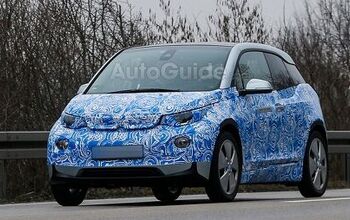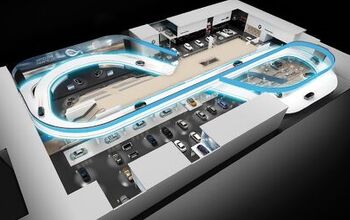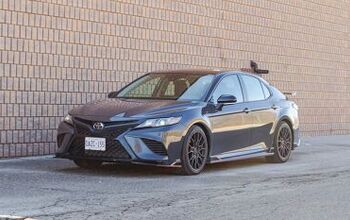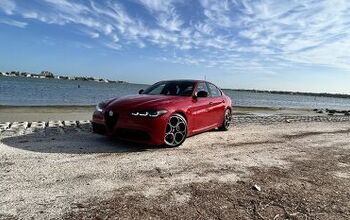Testing an Almost Self-Driving BMW I3

In the not-so-distant future, your car will be able to park itself and avoid costly or embarrassing fender benders. At the 2015 Consumer Electronics Show, BMW brought two prototype vehicles that were equipped to perform those tasks.
Scoping out the Environment
Starting Slow Then Trying to Crash
With a BMW representative sitting in the passenger seat, I stepped on the accelerator and cautiously set off toward the planter. At low speeds of around 5 MPH, the car eased to a stop. It was smooth and feels just as natural as if you or I were braking. We did the same thing backwards and drove towards another planter placed behind the vehicle. The BMW automatically started braking far later than I would have done personally, which made me a little nervous. Of course, it has a LIDAR sensor back on its rear bumper, so its view of the slowly approaching obstacle is much clearer than mine.
Then we decided to turn up the heat. With the front planter still in sight, I stepped on the accelerator and took off much faster than before at just under 20 MPH. Maybe it was the electric torque that made it feel like we were blasting towards the wall, but in full disclosure, a true sense of fear came over me as I drove towards the barrier and I squinted and almost covered my eyes and face instead of driving.
SEE ALSO: 2014 BMW i3 Review
Then the BMW rep showed off this car’s other parlor trick. Not only does it prevent you from crashing while driving forwards or backwards, but it will also stop you from turning into something. The scenario is if you’re in a tight parking garage and cut your turn too early, risking a scrape or dent into the side of your new BMW. Like before, the car applied full braking power and brought the car to a stop, like you have a force-field around the car. The system even compensated for the cars mirrors. Fold them in and the car can inch a bit closer to the barrier.
Another Semi-Autonomous Treat
This BMW technology could help drivers avoid at-fault accidents like rear-end collisions or problems in parking lots. But there was one
The company demonstrated this technology on unsuspecting show goers who just wanted to get a test drive in a BMW i3. Instead, they were surprised with a car that autonomously drove from its parking spot to a lineup of patiently waiting test-drivers. When it arrived, it changed gears into park and unlocked its doors, allowing entry and marked the beginning of the test drive.
The route the car took to get from its parking spot to the test driver featured a slight bend. Four laser scanners monitor the surrounding environment and compare that information to a digital blueprint of the area. While all this just takes place in a parking lot, BMW said the system could also let the car park itself in a garage after letting its passengers out.

Sami has an unquenchable thirst for car knowledge and has been at AutoGuide for the past six years. He has a degree in journalism and media studies from the University of Guelph-Humber in Toronto and has won multiple journalism awards from the Automotive Journalist Association of Canada. Sami is also on the jury for the World Car Awards.
More by Sami Haj-Assaad





































Comments
Join the conversation
I believe Volvo has a similar prototype that could park itself...